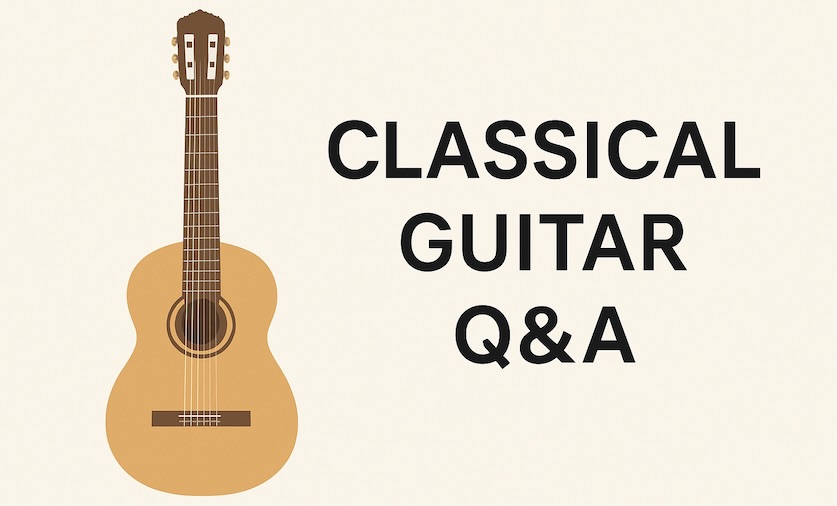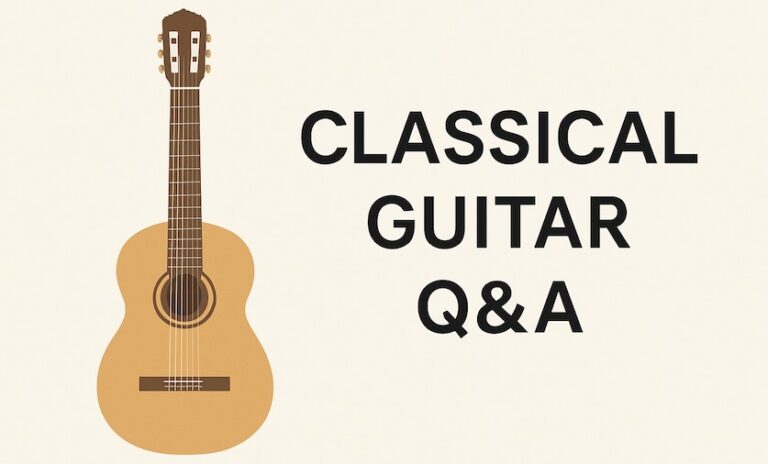
Question: What are grade levels in classical guitar?
Grade levels help classical guitar students find repertoire that is close to their musical and technical skill level. They are helpful in finding pieces to play that will be successful and manageable. But music is a flexible art form and categorizing music in this way can be problematic. Much of the time, a grade level is very flexible depending on your desired tempo and level of refinement. Higher grade material isn’t better music and doesn’t mean you are a better player. Remember that pros play from all levels and you should often play from lower grades to play musically well. With that in mind, we can use grade levels successfully to progress methodically toward higher achievements in music study.
I generally group the grades into some basic areas:
- Beginner – This level often includes a beginner method book teaching the basics of reading and playing melodic material and arpeggio textures. My Volume 1 and 2 method books cover this level and even dive into some grade 1 material to prep the student.
- Early-Intermediate (Grade 1-3) – This is real classical guitar playing but without much awkward fingering, stretches, upper positions, or barre technique. Often, Grade 1 can be a transitional grade bridging the beginner method books to the first three grades.
- Intermediate (Grade 4-6) – This level includes all the main guitar techniques but the scope of the pieces and technique level is manageable if the student’s technique is in good order.
- Late-Intermediate (Grade 7-8) – This grade includes some advanced technique work but the pieces tend to be manageable in length. Increased tempos can turn many of these works into advanced pieces.
- Advanced (Grade 9-up) – There are many factors that can make a piece advanced including scope/length of the piece, musical maturity of the work, awkward shapes or stretches, technique requirements, and extended or irregular techniques.
Please see my Curriculum for Classical Guitar – This is an outline of the different grades and levels and how to proceed and learn classical guitar with details on materials needed and practice advice.
I highly recommend you play lots of music from lower grades. For example, I have my grade 4 students play a lot of grade 2 pieces to work on musicality. Students who perform well might have worked on that piece for a whole year or more, played in lessons, masterclass, for friends, family, and smaller concerts. They’ve had success and failure and worked through it. All your ambition and goals should be related to playing music well rather than progressing to the next grade. Find good music that just happens to be playable for you. You might want to see my lesson on Six Misconceptions About Grade Levels in Music Studies (video below).
Questions & Support
If you need any clarification on this particular Q&A please leave a comment below. For new and existing questions please visit the main Classical Guitar Q&A page. If you are enjoying the free Q&As you can support the site here.


